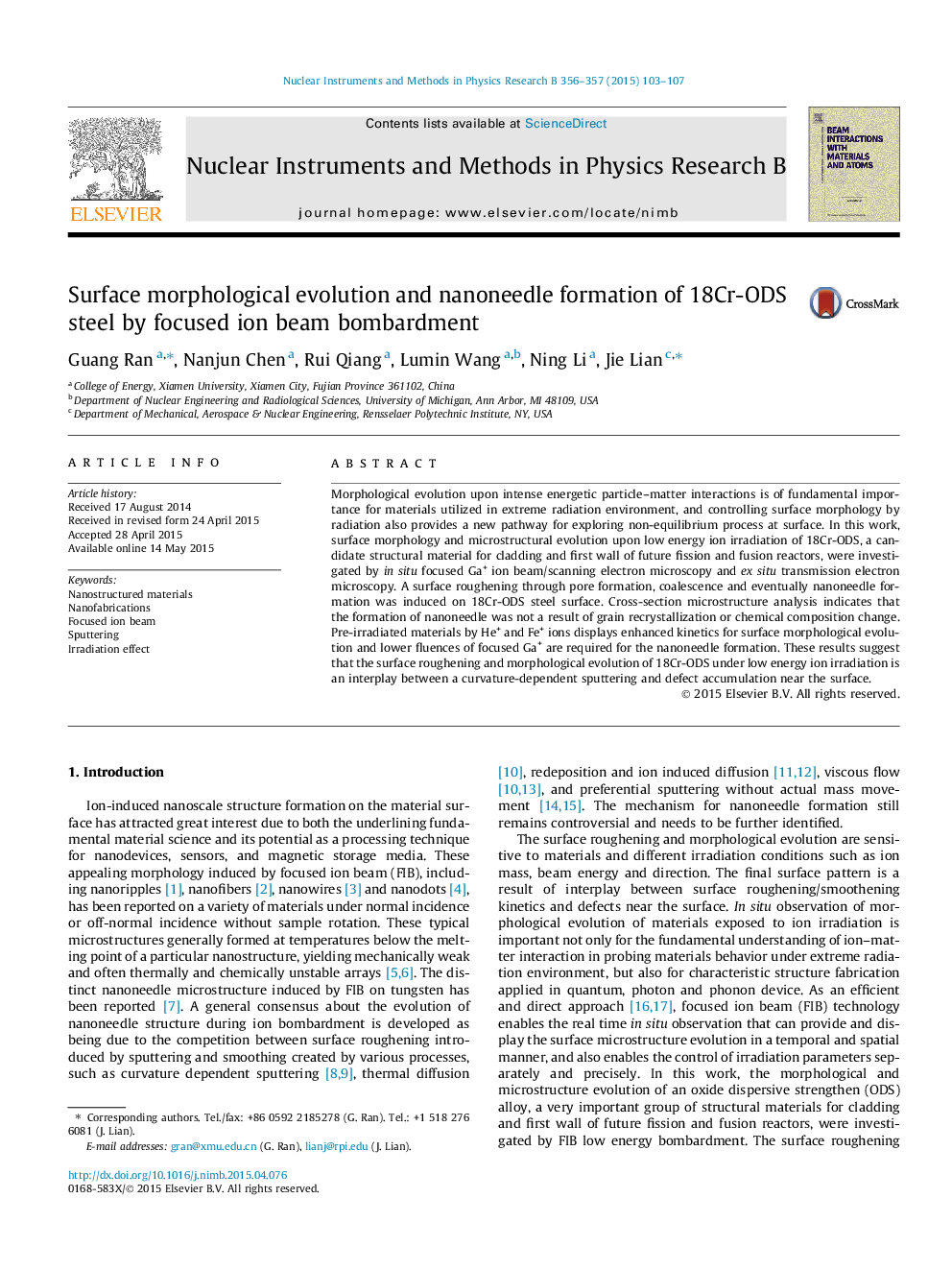| Article ID | Journal | Published Year | Pages | File Type |
|---|---|---|---|---|
| 1679897 | Nuclear Instruments and Methods in Physics Research Section B: Beam Interactions with Materials and Atoms | 2015 | 5 Pages |
•Morphological evolution of the 18Cr-ODS was studied under intense ion radiation.•The initial surface morphology of the steel significantly affects the nanoneedle formation, and the microstructure of the nanoneedle was characterized by TEM.•The formation mechanism of nano-needle structure of the 18Cr-ODS was discussed.•Surface defects enhance kinetics of surface roughening and pattern formation.
Morphological evolution upon intense energetic particle–matter interactions is of fundamental importance for materials utilized in extreme radiation environment, and controlling surface morphology by radiation also provides a new pathway for exploring non-equilibrium process at surface. In this work, surface morphology and microstructural evolution upon low energy ion irradiation of 18Cr-ODS, a candidate structural material for cladding and first wall of future fission and fusion reactors, were investigated by in situ focused Ga+ ion beam/scanning electron microscopy and ex situ transmission electron microscopy. A surface roughening through pore formation, coalescence and eventually nanoneedle formation was induced on 18Cr-ODS steel surface. Cross-section microstructure analysis indicates that the formation of nanoneedle was not a result of grain recrystallization or chemical composition change. Pre-irradiated materials by He+ and Fe+ ions displays enhanced kinetics for surface morphological evolution and lower fluences of focused Ga+ are required for the nanoneedle formation. These results suggest that the surface roughening and morphological evolution of 18Cr-ODS under low energy ion irradiation is an interplay between a curvature-dependent sputtering and defect accumulation near the surface.
